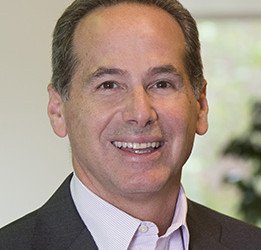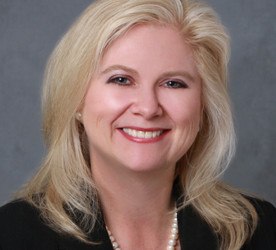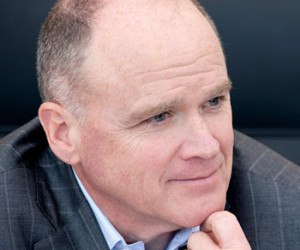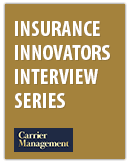Carrier Management reached out to leaders in the property/casualty insurance industry, asking them to respond to questions about innovation. Here we present 14 responses to the sixth question we posed—this one about the threat of external disrupters to the industry.
Q6: Do you believe the next innovation to impact the P/C insurance industry will come from inside the industry or from an external innovator? Why?
- Q1: The greatest innovation in the P/C insurance industry
- Q2: Describe the greatest innovation at your company
- Q3: Innovation or innovator outside the insurance industry
- Q4: How your company encourages innovation
- Q5: The biggest obstacle to innovation within the insurance industry?
- Q6: The next innovation to impact the P/C insurance industry
- Q7: Your role in leading innovation.
- Q8: Best book you have read about innovation
- Q9: Describe a failed initiative at your company
- Q10: Collaborating with market competitors
- Q11: Can P/C insurers disrupt other industries?

Sciolla (Gen Re): One threat I see is the disruption in our industry from new players with a completely different perspective. Take Google starting to give auto insurance quotes. They can apply unique skills and experience, and most importantly, a unique lens on our industry.
These tech and other companies are not held back by our perceptions of how the insurance business has been operating or should operate.
What will Google mean to the agency system? Many insurers have agency relationships in their thinking, but not so for companies outside our industry.
Driverless cars are yet another example—with the potential to remake the auto insurance world.
We stay closely attuned to emerging issues for many reasons, but one is for insights to what disruptions might be coming our way. The sooner we see it on the horizon, the sooner we can prepare for it and help our clients do the same.
Galanski (Navigators): The most impactful of the current innovative actions within the industry is coming from “outsiders”—hedge funds and other large financial investors. They have gone from investing in insurers to becoming risk takers through special purpose vehicles and by capitalizing reinsurers. By transforming insurers’ sources of capital, “outsiders” have fundamentally changed the reinsurance industry. It’s hard to imagine their impact will stop there.

Wurzler (OneBeacon Technology): Thinking broadly, I think the Internet and the smartphone represent the paradigm shifts that will let the property/casualty industry develop and implement ground-breaking ideas. The foundation is now in place to launch fantastic tools for use by insureds, agents, brokers, loss prevention engineers and underwriters alike.
Importantly, the mobile platform will enable faster communication and customer service across the board. For instance, already, there are mobile applications to enable almost instant requests for coverage to be implemented. Imagine going to the car dealer to purchase a new truck for your company, and while there, you log on to your smartphone to input the motor vehicle ID and set your insurance parameters. You immediately see the price and bind the coverage, and finally view and print the proof of insurance. Or, similarly, you can immediately add a new computer server to your scheduled inventory of covered business equipment.
The limitation of what comes from innovation is simply our own imagination.
Rios (American Modern): I think the next innovation to impact the property/casualty insurance industry will come from an external innovator or external disruptor who sees things and says, “Why don’t you try this?”
Look at what Uber is doing. That’s why it pays to network, to get to know people outside the industry. You never know where the next big idea is going to come from.
Hendrick (XL Catlin): Outside expertise, especially in new or emerging industries, is going to be even more important as we develop new insurance products for new and emerging industries. By blending insurance expertise with risk-specific, third-party subject matter expertise, we can deliver some very innovative insurance products that address new risk needs.
Rao (PwC): The next innovation in the insurance industry is very likely to come from a technology or a data-and-analytics player. The technological pace of change is accelerating and opening up new opportunities for technology companies to disrupt a variety of industries, including insurance. The technology companies have the data, the talent and the funding to disrupt the insurance sector. Also, not having an existing infrastructure and revenues to protect makes it easier for them to develop new ways of doing things.

Hay (KPMG): P/C insurers should begin preparing for more rapid and more disruptive innovative forces, particularly from external sources. The effects of autonomous vehicles, for example, have the potential to significantly disrupt and transform the automotive insurance industry faster than most in the industry think. Each new wave of technology promises to improve safety and avoid more accidents, and the shift toward autonomous vehicles could lower claim frequency and premium volume and introduce new competition, which may lead to financial stress and consolidation in the insurance industry. Executives should understand their company’s exposure to the change, evaluate their business strategies and prepare their operations.
Inside the industry we’re seeing some of the largest insurers use their large surpluses and capital to establish venture capital units to innovate products for customers and find technology solutions that create greater efficiencies in their own businesses. Further, creating VC teams is an effective way to attract talent that might never have considered the insurance industry as a place to launch a career. These talented individuals are making great leaps in building sophisticated underwriting models; creating services that increase touch points for home and vehicle customers; and developing sensors that detect break-ins, water leaks or electrical malfunctions in the industrial and corporate world.

Lee (AIR Worldwide): A lot of it will come from outside the industry. For example, over the past decade, technological advances like high-performance computing are making it possible to achieve previously unattainable levels of performance and scalability in cat modeling. As the Internet of Things continues to mature, insurance companies are ingesting volumes of data about the exposures in their portfolio and developing new underwriting guidelines. Even social media is providing real-time data. Enter big data solutions. We believe the foundation of analytics going forward must be built on a solid big data platform that’s capable of meeting the industry’s expanding data needs.
Watson (Argo): On one hand, insurers have the advantage because we are experts in our craft. That’s something technology companies cannot compete with. But technology providers have the client focus and expertise carriers need.
I don’t think it’s a matter of who—insurance or technology—will win the battle. Winners will be evaluated on the merits of their ability and the speed with which they can marry these two worlds and change the game.
Kelley (Ironshore): Coverage solutions for emerging cyber risk will likely follow a similar path as the employment practices liability product. Identification of the inherent exposures of cyber risk is in its early stages, with risk transfer solutions still evolving. Clear recognition of underlying exposures and even clearer understanding of product design and market capacity will be essential. Adaption of the EPL products underwent an analogous trajectory for providing the market with protective cover.
The ideal outcome for addressing cyber risk exposure will involve a collaboration—essentially, identification of risk transfer solutions from within the industry and mitigation support services evolving from outside the industry, which will most likely emerge from the technology sector.
Lightfoot (Guy Carpenter): I think the next innovation will come from both, as innovation in the insurance industry is often complementary to what’s happening in the commercial sector. As an example, what innovative products or evaluation of risk will grow out of driverless cars? How will the insurance industry respond? Will it fundamentally change types of coverage or pricing, or create product innovations? In my view, responding to these types of challenges helps make the (re)insurance industry an interesting place in which to work.
Lupica (ACE): Actually, both. Inside the industry because looking at the new generation of insurance professionals today, they are probably the most technology savvy of any previous generation. And this openness and comfort with technology will prompt them to innovate in ways we have yet to imagine.
Outside the industry because that’s where the fresh perspective is, which is essential if we want to improve our processes and risk taking.
Either way, our industry will attract new interested minds, from all backgrounds, to challenge existing assumptions and make us better at mitigating risk.

Colberg (Assurant): Based on our collective breadth and depth of knowledge about risk and risk management, I would hope the next innovation would come from inside the industry. Realistically, it could just as easily come from nontraditional insurance players like Google, who have the data and relationships with customers that go beyond what the insurance industry has typically enjoyed. They may see opportunities where we cannot.
McGavick (XL Catlin): I believe it should come from inside our industry but not without the assistance of external innovators. And that’s what we aim to accomplish with XL Innovate. Similar to what our complex accounts team did for Bloom Energy, our XL Innovate team will seek outside independent expertise to develop products that address very specific industry risks.
Read more innovation responses:
- Q1: The greatest innovation in the P/C insurance industry
- Q2: Describe the greatest innovation at your company
- Q3: Innovation or innovator outside the insurance industry
- Q4: How your company encourages innovation
- Q5: The biggest obstacle to innovation within the insurance industry?
- Q6: The next innovation to impact the P/C insurance industry
- Q7: Your role in leading innovation.
- Q8: Best book you have read about innovation
- Q9: Describe a failed initiative at your company
- Q10: Collaborating with market competitors
- Q11: Can P/C insurers disrupt other industries?
Read other innovator’s response by question:
 Stanley A. Galanski, President and CEO, The Navigators Group, Inc.
Stanley A. Galanski, President and CEO, The Navigators Group, Inc. Mark E. Watson III, President and Chief Executive Officer, Argo Group International Holdings, Ltd.
Mark E. Watson III, President and Chief Executive Officer, Argo Group International Holdings, Ltd. Kevin H. Kelley, Chief Executive Officer, Ironshore Inc.
Kevin H. Kelley, Chief Executive Officer, Ironshore Inc. John Wurzler, President, OneBeacon Technology Insurance
John Wurzler, President, OneBeacon Technology Insurance Alan B. Colberg, President and Chief Executive Officer, Assurant, Inc.
Alan B. Colberg, President and Chief Executive Officer, Assurant, Inc. Manny Rios, President and CEO, American Modern Insurance Group
Manny Rios, President and CEO, American Modern Insurance Group Dave Pratt, General Manager, Usage-Based Insurance, Progressive
Dave Pratt, General Manager, Usage-Based Insurance, Progressive Berto Sciolla, EVP and Manager of North American Treaty Reinsurance,Gen Re
Berto Sciolla, EVP and Manager of North American Treaty Reinsurance,Gen Re Greg Hendrick, Chief Executive, Insurance, XL Catlin
Greg Hendrick, Chief Executive, Insurance, XL Catlin Anand Rao, Principal, PwC U.S. Advisory Practice
Anand Rao, Principal, PwC U.S. Advisory Practice Mike McGavick, Chief Executive Officer, XL Catlin
Mike McGavick, Chief Executive Officer, XL Catlin David M. Lightfoot, Managing Director, Head of GC Analytics – Americas, Guy Carpenter
David M. Lightfoot, Managing Director, Head of GC Analytics – Americas, Guy Carpenter Conan Ward, Chief Executive Officer, Hamilton USA
Conan Ward, Chief Executive Officer, Hamilton USA Ming Lee, Chief Executive Officer, AIR Worldwide
Ming Lee, Chief Executive Officer, AIR Worldwide Laura Hay, National Insurance Sector Leader, KPMG LLP
Laura Hay, National Insurance Sector Leader, KPMG LLP John Lupica, Vice Chairman, ACE Group; Chairman, Insurance–North America
John Lupica, Vice Chairman, ACE Group; Chairman, Insurance–North America
Get all 16 interview neatly packaged in a single PDF download. Explore ideas by personality and by question. More than 60 pages of content.






















 How Cincinnati Insurance Does E&S
How Cincinnati Insurance Does E&S  $1 Trillion! 2024 P/C Industry Direct Premiums At Record Level
$1 Trillion! 2024 P/C Industry Direct Premiums At Record Level  Is State Farm General a Sinking Ship? California Emergency Rate Request Dropped to 17%
Is State Farm General a Sinking Ship? California Emergency Rate Request Dropped to 17%  Progressive: Policies Grow Faster Than Workforce
Progressive: Policies Grow Faster Than Workforce 









